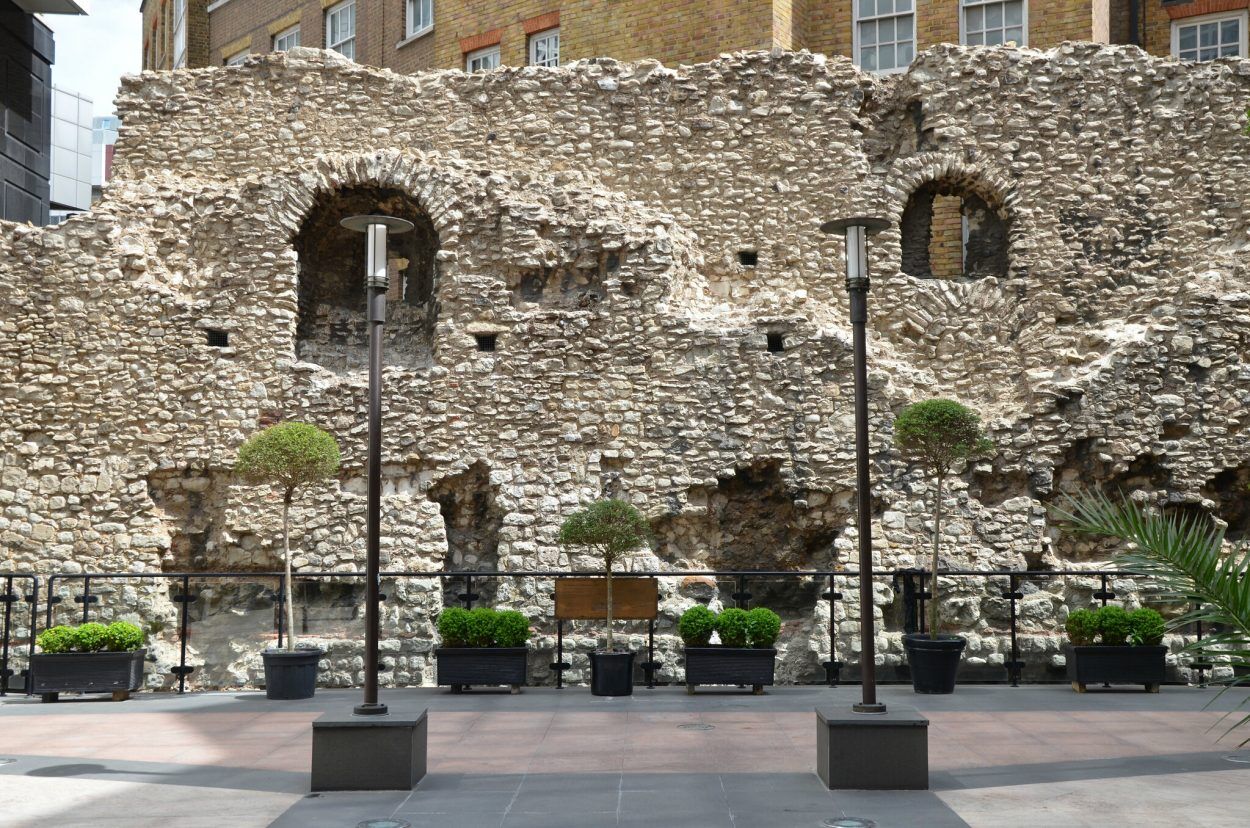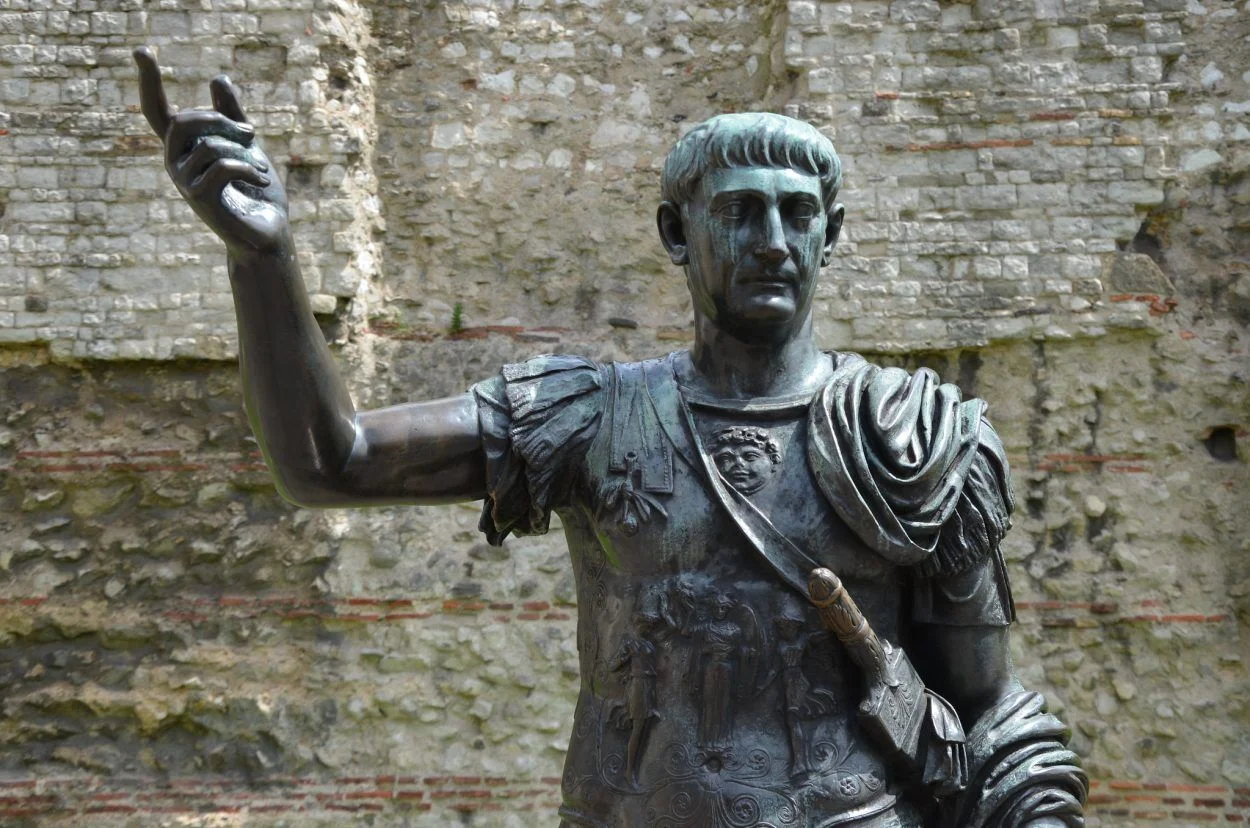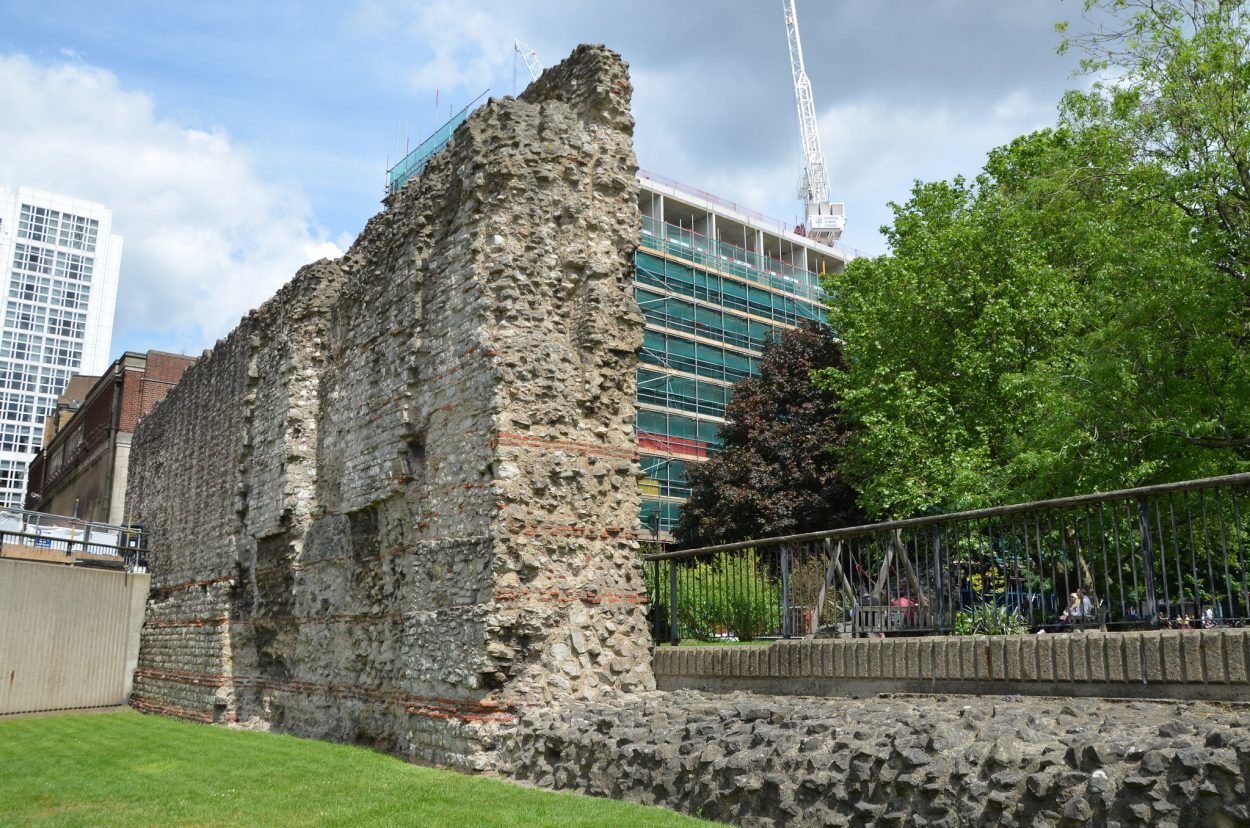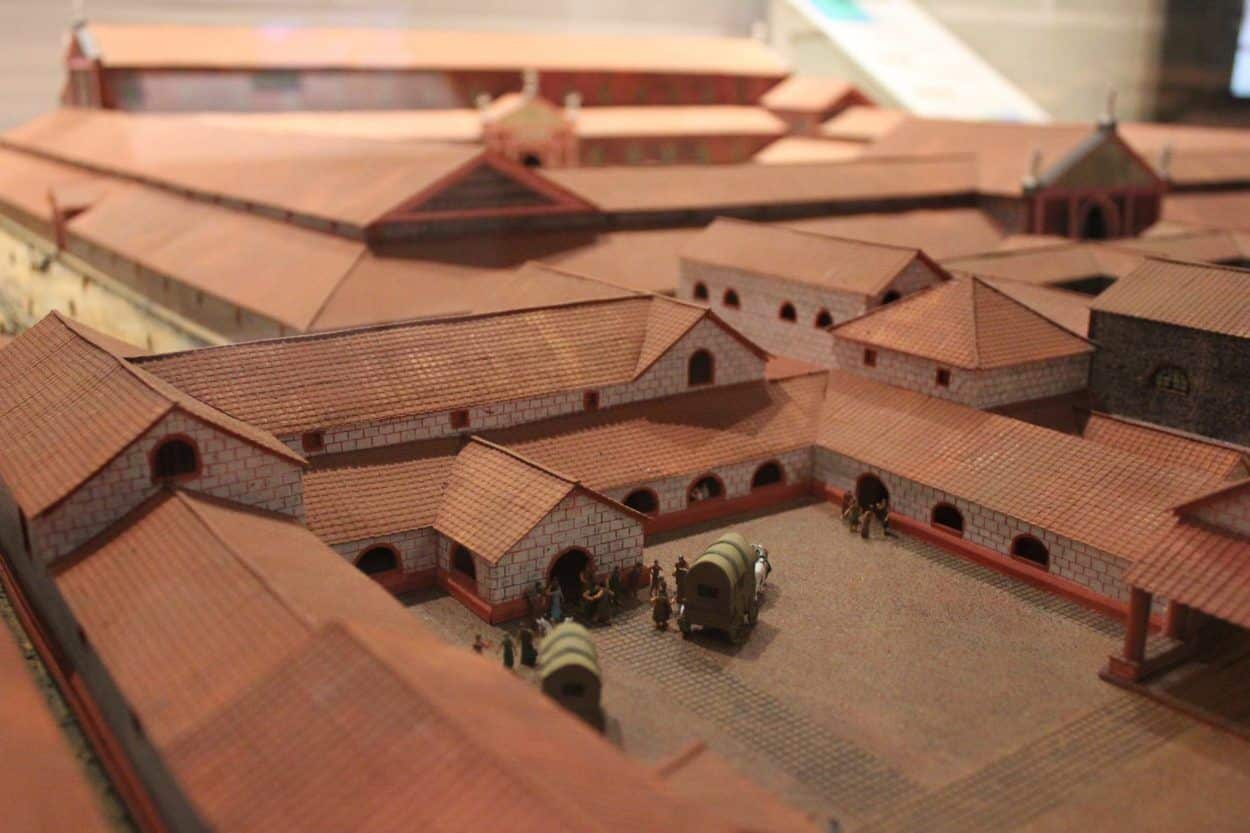Londinium is the name given to the Roman city, now occupied by the City of London that contains the historic centre and the primary central business district of London.
Unlike many Roman settlements established on existing Oppidum, there does not appear to be any prior Iron Age settlements before the Roman conquest of AD43 within the Roman city limits. Several fortified Iron Age hillforts and enclosures are evident in the greater London area, like those at Wimbledon and Epping Forest, possibly attributed to either the Trinovantes or Catuvellauni tribes.
The site was established in AD47 (confirmed by a dendrochronological study) around a narrow point on the River Thames that enabled the construction of a bridge crossing, but deep enough to allow seagoing vessels to navigate the tidal river channel.

The function of the new settlement is debated, with one theory proposing that Londinium was built as a planned commercial port or a civilian enterprise. The archaeological evidence from this period does suggest a cosmopolitan community of merchants from across the Empire. Another theory proposes a Roman military encampment, evident by the discovery of Claudian-era camp ditches.
In AD 60-61, an uprising orchestrated by Queen Boudica of the Iceni led a tribal coalition that included the bordering Tinovantes, and destroyed Londinium, Camulodunum (Colchester) and Verulamium (St Albans).

After being destroyed, the city was rebuilt as a planned town following a typical Roman grid system. A temporary fort was erected around 65-80 AD in modern Fenchurch Street, possibly as a precaution due to the tribal revolt. A later stone fort was built in 120 AD, north-west of the main settlement that could house up to 1000 men with suitable barracks for a rotating garrison.
By the end of the 1st century AD, Londinium had expanded rapidly and quickly became one of the largest cities in Roman Britannia, replacing Camulodunum (Colchester) as the provincial capital.

The city was centred on modern-day Ludgate Hill to the west and the Tower of London to the East. The northern extent ran to Bishopsgate and Cipplegate near the former site of the Museum of London, marked by the street named the London Wall.
A large defensive wall was constructed between 190 and 225 AD that encircled the landward side of the city (one of the largest construction projects carried out in Roman Britain). The wall controlled access, through small pedestrian postern gates like the one by Tower Hill and four main gates: Bishopsgate and Aldgate in the northeast at the roads to Eboracum (York) and to Camulodunum (Colchester) and Newgate and Ludgate in the west along at the road that divided for travel to Viroconium (Wroxeter) and to Calleva (Silchester).

During the 2nd century AD, Londinium had reached its peak with around 45,000-60,000 inhabitants, covering an area of 330 acres north of the River Thames. The city contained a large forum and basilica (one of the largest in the Roman Empire north of the Alps), several bathhouse complexes and temples, an amphitheatre, the Governors Palace (Praetorium), and many townhouses (domus).
Londinium’s status began to decline during the 5th century AD, with many public buildings falling into disrepair and communication with the rest of the Roman Empire beginning to weaken due to the barbarian incursions into Gaul and Hispania.
Archaeologists have found evidence that a small number of wealthy families continued to maintain a Roman lifestyle until the middle of the 5th century, inhabiting villas in the south-eastern corner of the city. By the end of the 5th century, Londinium was a deserted ruin.
Over the following centuries, what remained of the city ruins would reside in the territory of the Kingdom of the East Saxons – Essex, but the Saxon settlement of Lundenwic developed west of the Roman ruins in modern-day Covent Garden.
It would not be until the Viking invasions during the reign of King Alfred the Great, that Londinium would once again be repopulated, taking advantage of the Roman walls that were still standing. The city now became known as Lundenburg, marking the beginning of the continuous history of the City of London.
Header Image Credit : Carole Raddato





